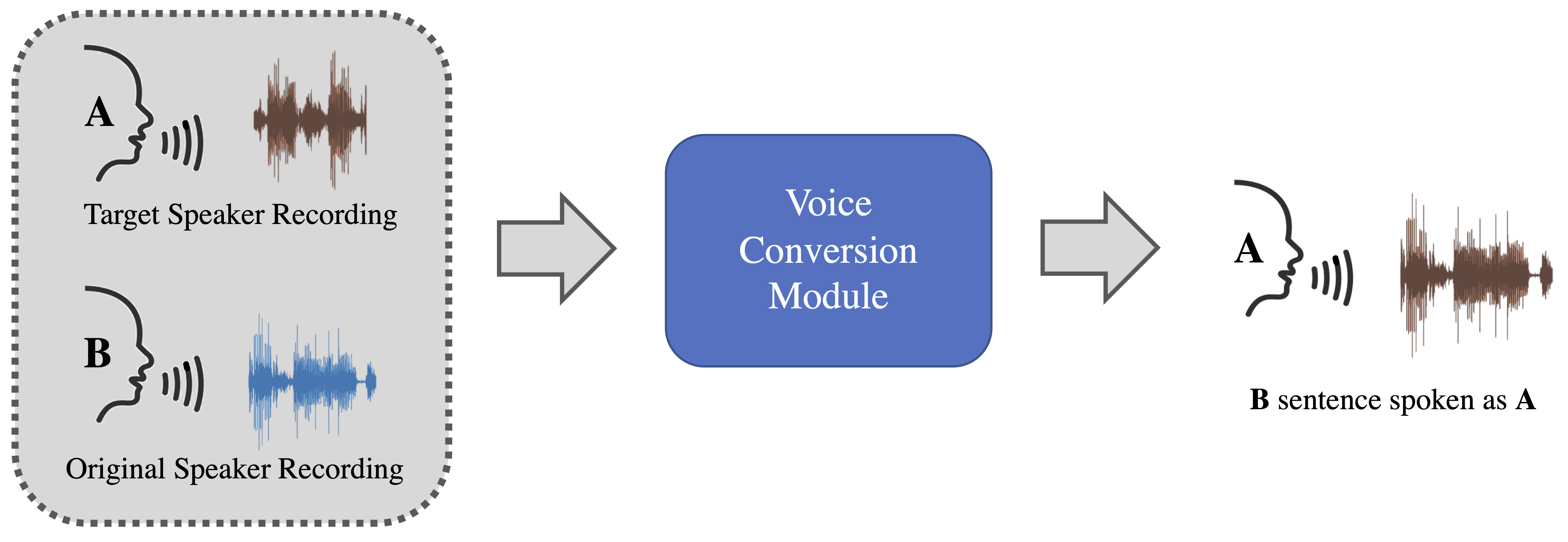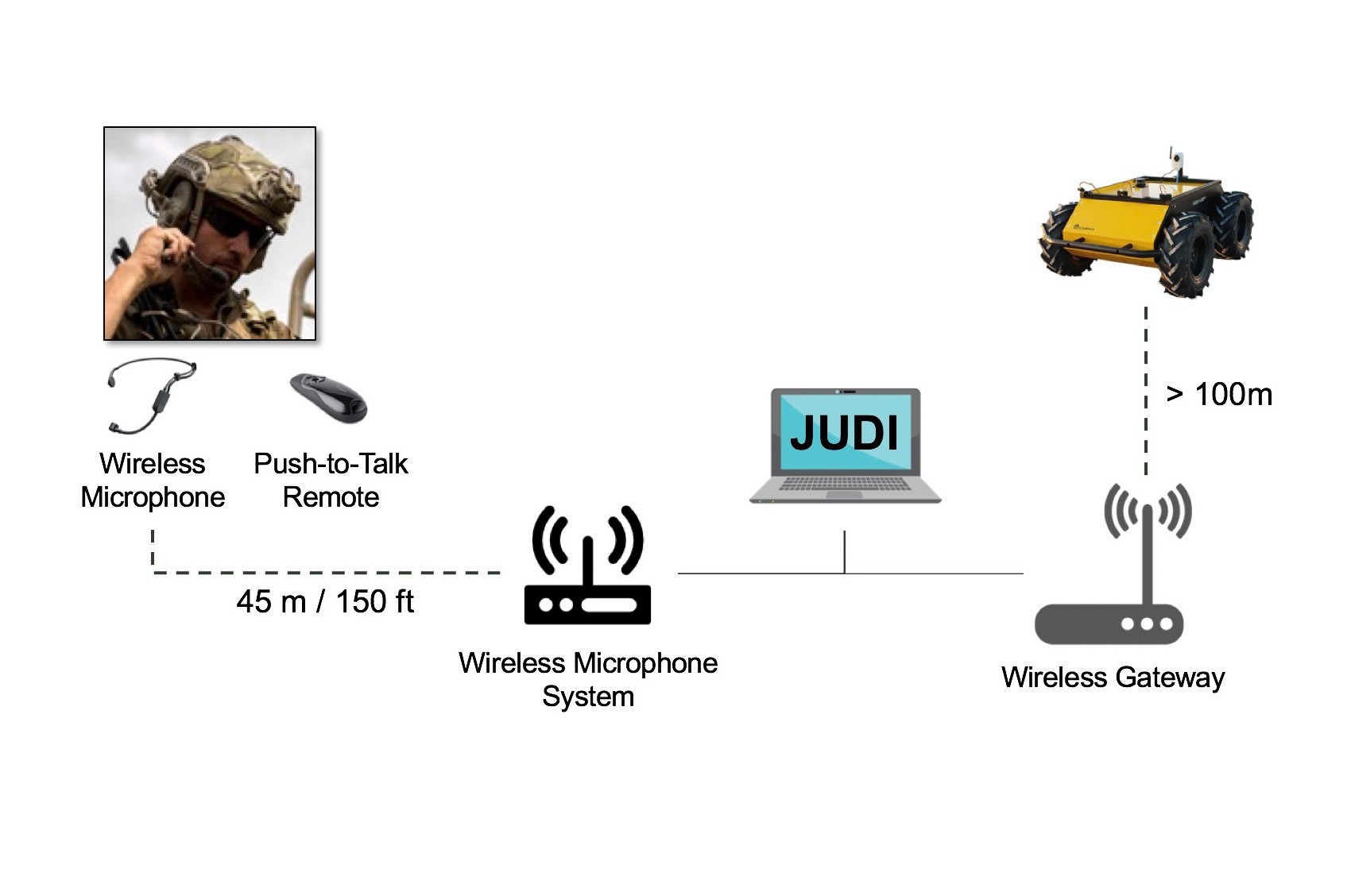
Imagine just talking to your devices to get things done, connect with customers, and work more efficiently. That's the power of voice technology, changing how businesses work. By 2022, over half of households were expected to have a smart speaker. So, this isn't just some future idea—it's happening now, and it's changing business operations. In this article, we’ll break down how voice technology can help business leaders, its strategic and operational perks, and what’s coming next. Whether you're into tech or leading a business, knowing how voice technology impacts your work is key. So, let's see how you can use this tool to your advantage!
Summary: This article describes the strategic and operational benefits of voice technology for business leaders and explores future trends and innovations in the field. It also addresses frequently asked questions about the implementation and impact of voice technology in business functions.
Understanding Voice Technology in Business
What is Voice Technology?
Voice technology involves the use of systems and software to facilitate interaction through spoken words. This technology encompasses tools such as speech recognition, speech-to-text, text-to-speech, and voice biometrics. Essentially, it converts spoken language into written words or commands, enabling faster, hands-free communication in various business settings.
A significant advancement in this field is AI-driven speech enhancement, which improves audio clarity, particularly in noisy or remote environments. Voice biometrics is another fascinating aspect, utilizing unique voice characteristics for identity verification, thereby adding a layer of security for access and transactions. For instance, a healthcare provider might employ voice recognition to dictate patient notes directly into electronic records, reducing paperwork and enhancing efficiency.

Different Forms of Voice Technology
Voice technology manifests in several forms, each with distinct uses and applications.
Speech Recognition in Business
Speech recognition technology converts spoken language into text. It plays a crucial role in automating customer service and record-keeping, accelerating communication, and enhancing operations in sectors like healthcare, retail, and finance. For example, call centers leverage this technology to manage queries in real-time, while doctors use it to swiftly generate patient records.
Text-to-Speech for Accessibility
Text-to-speech (TTS) technology transforms text into a natural-sounding voice. It is vital for customer support, e-commerce, and accessibility. Particularly beneficial for individuals with visual impairments or reading difficulties, TTS converts written text into sound. Solutions like Amazon Polly and IBM Watson Text to Speech provide realistic voice outputs, enhancing user experience.
Voice Biometrics for Security
Voice biometrics technology verifies identity by analyzing unique voice features, offering secure access and verification in sectors like finance and healthcare. Its use is expanding for secure customer verification in banking and telecom. Companies such as Nuance and VoiceVault are leaders in developing advanced voice biometric systems.
In-Car Voice Recognition Systems
In-car voice recognition enables drivers to control vehicle functions hands-free, enhancing safety and convenience. This technology is gaining popularity in automobiles, allowing drivers to manage climate, entertainment, and navigation through voice commands, simplifying the driving experience.
Essential Features of Voice Technology
Voice technology boasts several standout features that make it a powerful tool in today's world.
Real-Time Processing Capabilities
Real-time processing with minimal delay facilitates smooth, natural conversations. This capability is crucial for applications requiring quick responses, such as customer service and telemedicine.
Advanced Noise Removal Technology
Advanced noise removal eliminates background noise without compromising audio quality, ensuring clarity. This feature is particularly beneficial in real-time communications, especially for remote work and telemedicine.
Bandwidth Optimization for VoIP
Bandwidth optimization maintains high audio quality even on low-bit-rate connections, essential for Voice over Internet Protocol (VoIP) communications. This ensures effective voice technology performance in areas with limited bandwidth.
Multilingual Support for Global Reach
Multilingual support enhances communication across different languages, improving accessibility in global business. This feature allows voice technology to reach a broader audience, breaking language barriers.
Security Features in Voice Technology
Security features, such as voice biometrics, provide authentication and fraud prevention by recognizing unique voiceprints. This secures transactions and access, making voice technology a reliable choice for sensitive areas like healthcare and finance.
Integration with Business Systems
Integration with business systems automates processes like customer service, order tracking, and personalized recommendations via voice interfaces. This enhances efficiency and improves customer experience by streamlining operations.
For example, call centers utilize speech recognition and AI voice APIs to automatically manage customer queries, reducing wait times and enhancing service quality. This exemplifies how voice technology can revolutionize business operations across various industries.
Voice technology is continually evolving, offering new solutions that enhance efficiency, security, and accessibility in numerous domains.
Strategic Benefits of Voice Technology for Business Leaders
Improving Leadership Communication with Voice Technology
Voice technology is revolutionizing the way leaders engage with clients and stakeholders, making interactions more personal and seamless. Business voice services empower leaders to forge stronger connections, facilitating quick and personalized communication essential for maintaining close ties with clients and team members.

Tools such as VoIP systems integrate voice, chat, and email, streamlining operations and enhancing team collaboration. This integration ensures leaders maintain clear and efficient communication, keeping everyone aligned.
Voice AI agents further enhance this by providing 24/7 customer support, reducing wait times, and offering tailored solutions. This ensures consistent, high-quality communication with customers and employees, allowing leaders to address issues swiftly and effectively. For example, a CEO might leverage an AI voice assistant linked to the company’s system to monitor real-time customer feedback, quickly resolving concerns and enhancing leadership responsiveness.
Leveraging Voice Technology for Data-Driven Decision Making
Voice technology is pivotal in data-driven decision-making, offering leaders valuable insights from customer interactions. AI voice assistants collect and analyze data, enabling business leaders to make informed decisions and enhance customer service.

Platforms like Google’s Dialogflow and IBM’s Watson allow companies to scale by deploying AI voicebots across various applications. This enables leaders to utilize data from voice interactions to optimize operations, ensuring decisions are supported by real-time data.
Voice AI agents access company data and knowledge resources to provide accurate responses, aiding leaders in monitoring and improving customer service. This real-time data allows leaders to identify common customer issues and implement informed changes to products and support strategies. By leveraging voice technology, leaders ensure their decisions are based on precise, up-to-date information, guiding the company more effectively.
Streamlining Executive Workflows with Voice Technology
Voice technology enhances executive workflows by automating routine tasks and boosting productivity. VoIP phone systems are scalable and user-friendly, integrating with conferencing and collaboration tools to enable executives to manage communications efficiently, regardless of location. This flexibility is crucial for maintaining productivity in both office and remote settings.
Advanced voice solutions also reduce costs through predictable expenses and lower infrastructure costs, allowing executives to allocate resources more strategically.
Voice AI agents handle routine tasks such as answering FAQs, scheduling appointments, and processing transactions, freeing executives to focus on strategic tasks like planning and decision-making. For instance, an executive might use voice AI to automatically manage routine customer inquiries, freeing up time for strategic initiatives.
Businesses utilizing Voice AI Automation report substantial improvements in operational efficiency and expedited completion of routine tasks. For example, customer service costs can decrease by up to 50%, while productivity gains typically range from 25-40%. This enables companies to grow without increasing human resources, demonstrating the significant impact of voice technology on business operations.
In conclusion, voice technology provides business leaders with a strategic advantage by enhancing communication, enabling data-driven decisions with AI insights, and streamlining workflows through automation and unified platforms. By adopting these tools, leaders can enhance their effectiveness and drive success in a competitive landscape.
Enhancing Communication
VoIP for Business
Voice AI Agent
Voice Assistants
How Voice AI Automation is Shaping Future Workforces
Operational Benefits of Voice Technology Across Business Functions
Enhancing Customer Experience with Voice Technology
Voice technology is revolutionizing the way businesses interact with their customers, offering faster and more personalized experiences. Imagine ordering food: instead of typing, you simply voice your order. This reduces wait times and minimizes errors, which is particularly beneficial in busy environments. For instance, a restaurant utilizing voice orders can serve customers more efficiently, leading to increased satisfaction.
Voice bots also enhance customer interactions by delivering quick responses—something 72% of people expect. This immediacy is vital for a positive customer experience. Furthermore, voice technology increases accessibility for individuals with disabilities, enabling easier interactions. It also collects valuable data on customer preferences, aiding businesses in refining their services and marketing strategies.

Increasing Productivity in Remote Work with Voice Technology
Voice technology is a game-changer for remote workers, automating tasks such as scheduling meetings and managing calendars. This automation frees up time for more critical tasks, thereby boosting productivity. Real-time voice tools facilitate smoother collaboration by enabling quick communication and feedback—essential for swift decision-making.
Voice assistants allow multitasking without the need for hands, enhancing efficiency. They also overcome language barriers with real-time translations, fostering better teamwork. By integrating with other applications, voice assistants ensure seamless operations regardless of location. For example, a remote team utilizing voice AI for scheduling and multilingual meetings can accelerate project timelines and improve collaboration.
Streamlining HR and Administrative Tasks with Voice Technology
Voice technology significantly aids HR and administrative functions by automating tasks like scheduling, thus reducing routine workload and saving costs. AI voice agents can analyze conversations to optimize HR processes and boost employee engagement. Voice biometrics add an extra layer of security by verifying users through unique vocal traits, safeguarding sensitive information.

Automated systems ensure precise data capture, minimizing errors. Scalable voice solutions grow with a business, efficiently supporting expanding needs. For instance, an HR team employing voice assistants for scheduling interviews and securely processing requests can reduce their workload and enhance accuracy.
Voice technology not only streamlines operations but also enhances security and compliance. As more businesses adopt this technology, they can anticipate improved productivity and increased customer satisfaction. By leveraging voice technology, companies maintain a competitive edge, offering superior services and optimizing internal processes.
For more insights on how voice technology can transform business operations, explore the Master of Code blog and Restroworks' article on voice technology in restaurants.
Future Trends and Innovations in Voice Technology
Emerging Voice Technology Trends for 2025
By 2025, voice technology is poised for a significant transformation. Voice AI is evolving beyond merely answering questions; it's becoming more of a partner. These systems will improve in understanding our speech, preferences, and even emotions, making interactions smoother and more personalized. As these technologies advance, they’ll enable seamless conversation transitions across devices—like moving from a watch to a speaker—without interruption, creating a more connected experience.
Voice assistants are becoming more context-aware. They will adapt their responses based on the environment, such as speaking faster if you're in a hurry or simplifying communication in noisy settings. Additionally, they'll start managing routine tasks like setting up calls or taking notes based on your habits. This assistance will integrate voice tech into our work, communication, and home management.
A significant trend is the demand for AI voices that sound human-like, with 80% of consumers seeking these features.

Despite the popularity of AI voices, many users still prefer human voices due to concerns about quality and emotional expression. Furthermore, voice assistants are expected to integrate with augmented reality, offering hands-free navigation and immersive experiences.
Voice technology will underpin smart environments, connecting homes, offices, and public spaces, allowing for voice-controlled interactions. Security remains crucial, with features like voice recognition and additional authentication steps to protect data. Voice assistants will also connect with emerging technologies like quantum computing and 6G, enhancing their speed and problem-solving capabilities.
The Role of AI in Voice Technology Evolution
AI plays a pivotal role in advancing voice technology. While AI voices have significantly improved, there are still concerns about their quality and ethical implications. Most consumers desire AI voices that sound natural and emotive. Although AI excels in creating multilingual content and reducing costs, it hasn't yet replaced human voice talent.
Clients appreciate the authenticity of human voices for brand marketing and personal audio content, valuing the unique touch they bring. While AI aids in language localization and content accessibility, quality and ethics remain significant concerns.
Voice Technology Market Growth and Adoption Strategies
The voice tech market is experiencing rapid growth as more users seek hands-free, convenient interaction methods. Companies are heavily investing in conversational AI, positioning voice tech as a cornerstone of communication and work by 2025.

The global voice recognition market is projected to grow from $12 billion in 2022 to $50 billion by 2029, with approximately 8 billion AI-powered voice assistants anticipated by 2025.
Multilingual voice content is a burgeoning area, with Spanish and Chinese markets leading for many voice buyers. Digital channels are increasing the demand for voice in marketing, animation, and online advertising, highlighting voice's importance in audience engagement. Adoption strategies focus on blending AI voice tech for scalability and cost efficiency with human talent to maintain quality and emotional depth.
Security enhancements in voice assistants, such as biometric checks, are crucial for their application in sensitive fields like finance and healthcare. As these trends and strategies unfold, voice tech is set to become integral to daily life, transforming our interactions with technology and each other.
For more on the evolution of Voice AI and insights into future voice assistants, explore these resources that keep voice tech at the forefront.
Voice Technology FAQs
How Can AI-Powered VoIP Improve Customer Satisfaction?
AI-powered VoIP systems significantly enhance customer service by:
- Smart Call Routing: Directing calls to the appropriate agent based on customer identity and past interactions, streamlining the service experience.
- Reduced Wait Times: Minimizing delays in customer service interactions.
- Personalized Interactions: Utilizing natural language processing for more tailored conversations.
- Real-Time Sentiment Analysis: Allowing agents to respond more effectively, thus improving service quality.

For example, a telecom company using AI-powered VoIP saw a 30% increase in customer satisfaction scores. Additionally, AI enables 24/7 support through voice assistants, providing assistance even after hours. This is supported by G2 user reviews and Forbes.
What Are the Cost Benefits of Voice Technology Integration?
Integrating voice technology in businesses offers significant cost savings by:
- Automating Routine Interactions: Reducing the need for extensive call center staff, allowing employees to focus on strategic roles and enhancing efficiency.
- Minimizing Errors: Speeding up processes and reducing mistakes from manual data entry, as highlighted in this article.
- Reducing Training and Infrastructure Costs: Cloud-based voice solutions are scalable and flexible, eliminating the need for expensive on-site hardware.

For instance, a retail company reduced customer service costs by 25% by employing voice tech for common inquiries and order tracking. Transitioning to cloud-based solutions, as noted by Harvard Business Review, allows scaling without additional costs for physical equipment.
How Does Voice Technology Boost Remote Work Productivity?
Voice technology significantly boosts productivity in remote work environments by:
- Facilitating Hands-Free Multitasking: Allowing seamless communication and task management.
- Increasing Efficiency: According to the Microsoft Work Trend Index report, 70% of workers report increased productivity with voice tech tools.
- Integrating with Project Management Tools: Enabling quick task updates and access to project information, as noted by TechCrunch.
Voice tech allows remote workers to manage schedules, set reminders, and transcribe meetings with voice-activated assistants, freeing up time for more critical tasks. By breaking down communication and task management barriers, voice tech aids remote teams in achieving their goals more efficiently, such as a software team that improved sprint planning with voice commands in virtual meetings.
Utilizing voice technology, businesses can boost customer satisfaction, reduce costs, and enhance productivity in remote work, fostering a more dynamic and responsive work environment. The Grand View Research report forecasts robust growth in the global voice technology market, driven by its applications in customer service and remote work, highlighting its potential across various sectors.